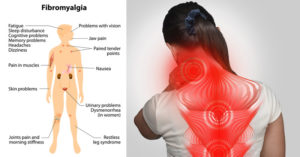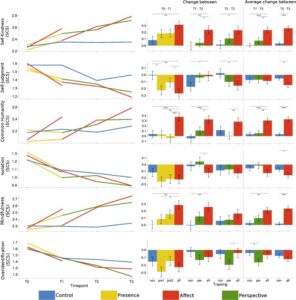Decrease Stroke Risk with Tai Chi or Qigong
By John M. de Castro, Ph.D.
“One of the main issues that a stroke survivor experiences is a problem with balance. . .This is where tai chi can make a huge difference. With a complete focus on slow, controlled, and repetitive movements, tai chi is effective in improving one’s balance through dynamic motion and coordination”. Saebo
Every year, more than 795,000 people in the United States have a stroke and it is the third leading cause of death, killing around 140,000 Americans each year. A stroke results from an interruption of the blood supply to the brain, depriving it of needed oxygen and nutrients. This can result in the death of brain cells and depending on the extent of the damage produce profound loss of function. Strokes come in two varieties. The most common (87%) is ischemic stroke resulting from a blocked artery. But strokes can also occur due to leaking or rupture of a blood vessel in the brain, known as hemorrhagic stroke.
There are a number of risk factors for stroke that are unchangeable, such as family history, age, and genes. But there are a very large number of factors that are under our control including high blood pressure, smoking, high cholesterol, poor diet, sedentariness, and obesity. Given this list it is clear that basic physical fitness and exercise would be excellent for stroke prevention. The ancient mindful movement technique Tai Chi is a very safe form of gentle exercise that appears to be beneficial for stroke victims.
In today’s Research News article “Efficacy of Tai Chi and qigong for the prevention of stroke and stroke risk factors: A systematic review with meta-analysis.” (See summary below or view the full text of the study at: https://www.ncbi.nlm.nih.gov/pmc/articles/PMC5690748/ ),
Lauche and colleagues review, summarize, and perform a meta-analysis of the effects of Tai Chi or Qigong practice on risk factors for Stroke. They did not find any trials that reported actual incidence of stroke, but found 21 research controlled trials that reported on risk factors for stroke, including hypertension, hyperlipidaemia, diabetes, overweight or obesity, or metabolic syndrome.
They found that the published research reported that Tai Chi or Qigong practice produced significant improvement in hypertension including reductions in both systolic and diastolic blood pressure. The studies also reported significant improvements in hyperlipidaemia, including lower levels of triglycerides, and LDL cholesterol, and higher levels of HDL cholesterol and in diabetes including fasting blood glucose levels and insulin sensitivity. Tai Chi or Qigong practice was also found to improve the body weight index in overweight and obese individuals. No adverse events were reported in any of the trials.
These results are remarkable in the breadth and extent of the effects of Tai Chi or Qigong practice on risk factors for stroke. Although there were no direct measures of stroke incidence the reductions in risk factors would predict a reduction, over the long-term of the likelihood and incidence of stroke. Lauche and colleagues, however, caution that the trials tended to be of low quality with considerable risk of bias. Hence, conclusions need to be tempered and the results needs to be confirmed with more highly controlled trials.
The review found evidence that Tai Chi or Qigong practices are safe, with no negative effects or adverse reactions. In addition, they can be implemented to large numbers of individuals at relatively low cost, can be conveniently practiced at home or in a clinic, and can be practiced alone or in groups. Also, since the practice is gentle and safe it can be used with frail, sickly or elderly individuals. Hence, Tai Chi or Qigong practice appears to be an excellent treatment for the reduction of the risk for stroke in vulnerable individuals.
So, decrease stroke risk with Tai Chi or Qigong.
“The main physical benefits of Tai Chi are better balance, improved strength, flexibility and aerobic endurance. Psycho-social benefits include less depression, anxiety and stress, and better quality of life.” – Ruth E. Taylor-Piliae
CMCS – Center for Mindfulness and Contemplative Studies
This and other Contemplative Studies posts are also available on Google+ https://plus.google.com/106784388191201299496/posts and on Twitter @MindfulResearch
Study Summary
Lauche, R., Peng, W., Ferguson, C., Cramer, H., Frawley, J., Adams, J., & Sibbritt, D. (2017). Efficacy of Tai Chi and qigong for the prevention of stroke and stroke risk factors: A systematic review with meta-analysis. Medicine, 96(45), e8517. http://doi.org/10.1097/MD.0000000000008517
Abstract
Background:
This review aims to summarize the evidence of Tai Chi and qigong interventions for the primary prevention of stroke, including the effects on populations with major stroke risk factors.
Methods:
A systematic literature search was conducted on January 16, 2017 using the PubMed, Scopus, Cochrane Library, and CINAHL databases. Randomized controlled trials examining the efficacy of Tai Chi or qigong for stroke prevention and stroke risk factors were included. Risk of bias was assessed using the Cochrane Risk of Bias tool.
Results:
Twenty-one trials with n = 1604 patients with hypertension, hyperlipidaemia, diabetes, overweight or obesity, or metabolic syndrome were included. No trials were found that examined the effects of Tai Chi/qigong on stroke incidence. Meta-analyses revealed significant, but not robust, benefits of Tai Chi/qigong over no interventions for hypertension (systolic blood pressure: −15.55 mm Hg (95% CI: −21.16; −9.95); diastolic blood pressure: −10.66 mm Hg (95% CI: −14.90, −6.43); the homeostatic model assessment (HOMA) index (−2.86%; 95% CI: −5.35, −0.38) and fasting blood glucose (−9.6 mg/dL; 95% CI: −17.28, −1.91), and for the body mass index compared with exercise controls (−1.65 kg/m2; 95% CI: −3.11, −0.20). Risk of bias was unclear or high for the majority of trials and domains, and heterogeneity between trials was high. Only 6 trials adequately reported safety. No recommendation for the use of Tai Chi/qigong for the prevention of stroke can be given.
Conclusion:
Although Tai Chi and qigong show some potential more robust studies are required to provide conclusive evidence on the efficacy and safety of Tai Chi and qigong for reducing major stroke risk factors.









